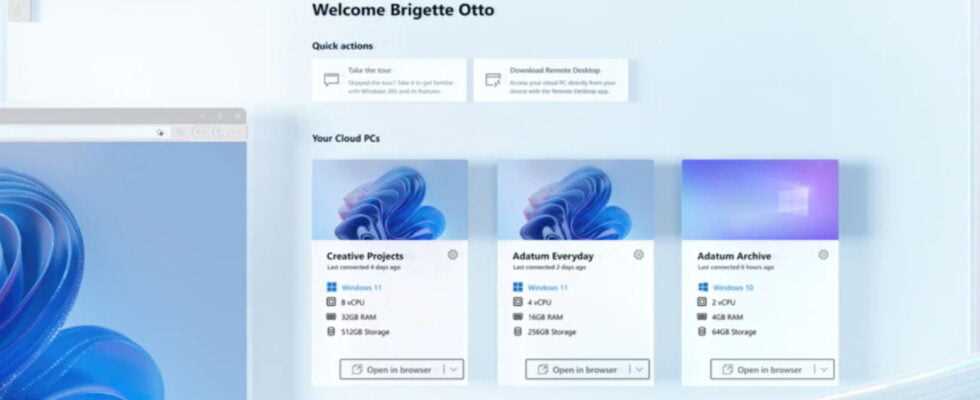Microsoft’s Windows 365 Cloud PC for enterprise offering gets a new service to make it easier for administrators to onboard users through its cloud identity platform, Azure Active Directory (AAD).
AAD is at the heart of Microsoft’s identity and security services and its “join” feature, which helps control access to devices, is now available for Windows 365 Cloud PC, the managed PC service launched last summer. for an amount between 22 and 147.5 euros per user per month to use the calculation, memory and storage in the cloud.
AAD’s Join feature has been “by far” the most requested by Windows 365 Enterprise users, according to Microsoft. It acts as a cloud-based device trunk bridge from Azure AD for organizations that use the on-premises variant of Active Directory. Azure AD Join allows administrators to enroll devices without using on-premises AD.
“This feature has been by far the most requested since the general availability of Windows 365,” Microsoft announced. “With Azure AD Join as a cloud PC join type option, you no longer need an existing Azure infrastructure to use the service, only your Azure AD users.”
The Cloud ID feature is currently in public preview. For now, this means admins don’t need an Azure subscription to provision Cloud PCs for their users, which can be done through the Microsoft Endpoint Manager admin center.
Microsoft is also improving the setup process for more languages to ensure Cloud PCs are available in a local language when users sign in. There are 38 local languages available.
When administrators create a provisioning policy, they can define a Language and Region pack to install on Cloud PCs. This helps speed things up for administrators who manually install language packs on an OS image.
Additionally, Microsoft’s Windows 365 Managed PC service has two new regions, US Central and Germany West Central. This allows administrators to create a virtual network in these regions to open a connection to an on-premises network.
Source: “ZDNet.com”
